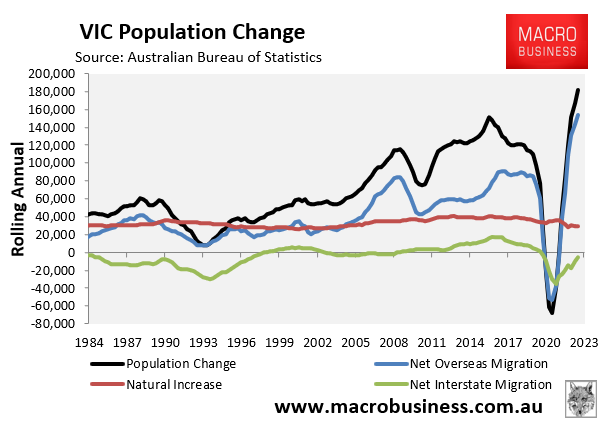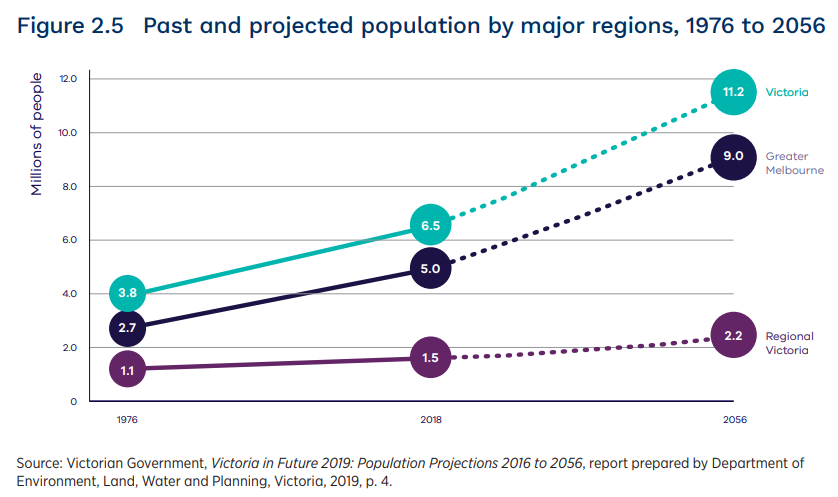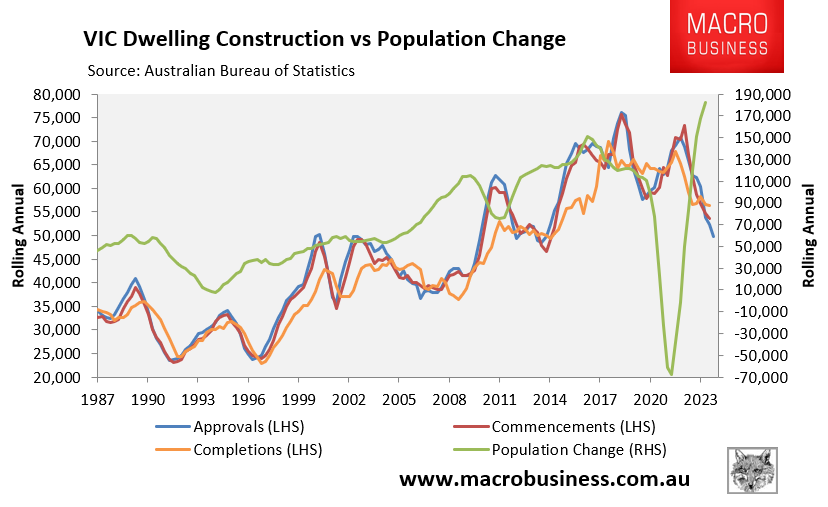Last week, the Australian Bureau of Statistics (ABS) reported that the nation’s dwelling approvals collapsed to only 162,200 in 2023, thereby tracking some 78,000 below the Albanese government’s target to build 1.2 million homes over five years (i.e. 240,000 homes a year).

This collapse in approvals was led by Victoria, where only 51,000 homes were approved for construction in 2023:

That was the lowest annual approvals figure for Victoria in a decade.
This level of approvals is also way below the Victorian government’s target to build 800,000 homes over a decade, which requires 80,000 homes annually.
Meanwhile, Victoria’s population is growing at an unprecedented rate, with the state growing by 182,000 people in 2023, almost entirely driven by record net overseas migration:

This growth is officially projected to continue into perpetuity, according to the state government:

The overwhelming majority of Victoria’s population growth will come from net overseas migration:

Therefore, Victoria is facing worsening housing shortages, with population growth destined to outrun dwelling construction.
As shown in the next chart, Victoria completed only 56,300 homes in the year to September 2023, and has never built even 70,000 homes in a single 12 month period:

As a result, the notion of building 80,000 homes a year for 10 straight years is unrealistic.
It is even more delusional when the state government is sinking most of the state’s construction resources into its Big Build projects, which are soaking up available workers, machinery and materials.
Builders Collective of Australia president Phil Dwyer warned recently that the residential construction industry is dire straits and large-scale construction projects are more appealing to builders and tradies:
“It’s had a big impact and that, of course, has impacted on the program of building all these houses that the government has targeted. We’ve got no hope in the world of building or meeting those targets”, Dwyer said.
“It drives up the cost of labour but more importantly, we don’t have enough tradies within the building industry to be able to build these homes”.
Similar sentiments were expressed by Housing Industry Association Victorian executive director Keith Ryan who warned that members were struggling to attract workers because of competing sources of employment.
“The only thing that makes it less of an issue than it could be is the fact that we’ve got a big slowdown in new-home starts coming through”, he said.
As shown above, Victoria’s population is officially projected to grow to 11.2 million by 2056, with Melbourne’s population reaching 9.0 million.
This significant growth in population will necessitate massive infrastructure and housing investments if the state is to avoid becoming overcrowded and its residents homeless.
The obvious solution is to run an immigration program that is proportionate to Victoria’s (and Australia’s) ability to build new homes and infrastructure while also protecting the natural environment (particularly water resources).
Otherwise, the country will experience persistent shortages and worsening living conditions.

